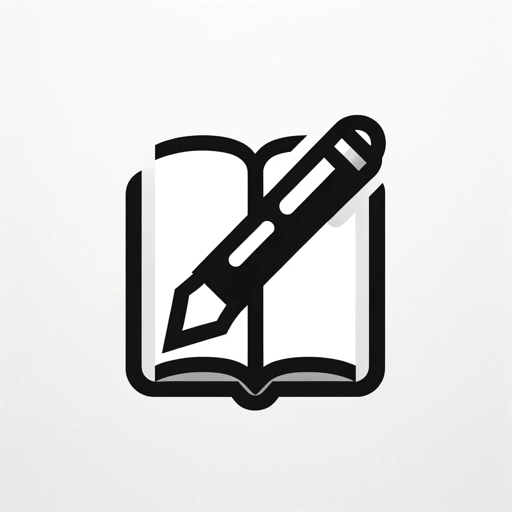Type-advanced AI writing assistant
AI-Powered Writing, Perfected.
Create a blog post on gardening
Write a humorous anecdote
Discuss the future of technology
Explain a complex scientific concept
Related Tools
Load More
Typescript
Advanced Typescript assistant and code generator with a focus on responsive, efficient, and scalable code. Write clean code and become a much faster developer.

TypeScript Engineer
An expert TypeScript engineer to help you solve and debug problems together.

Ultimate Fonts & Typography Style Idea Generator
📖🎨 Typography Expert: Font Pairings, Trends, & Design Tool Integration

TypeScript Expert
Advanced TypeScript coding assistant informed by official docs

Writeprint Maker
Give me a writing sample and I'll generate instructions to help an AI emulate that style.

SocionicsGPT
Will mislabel with MBTI and mix up functions at times, but explanations are accurate. Simply correct him and proceed. For questions about practical intertype relations, specify the types AND label (IEI-SLE Duality), then ask away!
20.0 / 5 (200 votes)
Detailed Introduction to Type
Type is a customized version of ChatGPT, tailored to produce text that closely mirrors human writing. Its design purpose is to generate content with a natural, human-like style, incorporating a variety of linguistic strategies to achieve this goal. Type adapts its tone and style based on the topic and context, ensuring a fluid and engaging writing experience. For example, when crafting a blog post, Type can introduce colloquialisms and idiomatic expressions to make the content relatable and lively. In contrast, for a professional report, Type maintains a formal tone while ensuring clarity and coherence.

Main Functions of Type
Content Generation
Example
Generating engaging blog posts, detailed articles, and creative writing pieces.
Scenario
A blogger needs a fresh and captivating article on sustainable living. Type generates a post that seamlessly blends informative content with a conversational tone, making the topic accessible and interesting.
Personalized Writing Assistance
Example
Providing tailored writing prompts and editing suggestions.
Scenario
An author struggling with writer's block receives unique prompts and storyline ideas from Type, sparking creativity and helping them progress with their novel.
Professional Communication
Example
Drafting business reports, emails, and presentations.
Scenario
A manager requires a concise and persuasive email to pitch a new project to stakeholders. Type drafts an email that clearly outlines the project's benefits and potential impact, ensuring a professional and compelling presentation.
Ideal Users of Type Services
Content Creators
Bloggers, authors, and social media influencers who need engaging and authentic content to captivate their audience. Type helps them maintain a consistent voice and produce high-quality content regularly.
Business Professionals
Managers, marketers, and corporate communicators who require polished and effective written communication. Type assists them in drafting clear, persuasive, and professional documents, ensuring their messages are well-received and impactful.

Guidelines for Using Type
Visit aichatonline.org
Visit aichatonline.org for a free trial without login, also no need for ChatGPT Plus.
Familiarize Yourself with the Interface
Explore the user-friendly interface, which offers intuitive navigation and various tools to assist your writing.
Choose Your Use Case
Identify your specific need, whether it’s academic writing, content creation, or professional correspondence, and select the corresponding tool.
Customize Your Output
Utilize the customization options to set the tone, style, and complexity of your output to match your desired outcome.
Review and Refine
Carefully review the generated content, make necessary adjustments, and ensure it meets your standards before finalizing.
Try other advanced and practical GPTs
Travel
AI-Powered Travel Planning Made Easy

Ideas
AI-Powered Creativity and Productivity Partner

Summarize
AI-Powered Summarization Made Simple

Yes GPT
AI-powered positivity to inspire action

WhimsyGPT
Magical images powered by AI imagination

ThreadsGPT
AI-driven content for impactful Threads posts.

Writer
AI-powered tool for aspiring authors.

JavaGPT
AI-powered Java programming support

SQL GPT
AI-powered SQL solutions for everyone

JavascriptGPT
AI-powered solution for JavaScript developers

TravelGPT
AI-powered travel insights at your fingertips

ProgramGPT
AI-powered tool for smarter coding solutions.

- Academic Writing
- Content Creation
- Creative Writing
- Professional Emails
- Report Generation
Frequently Asked Questions about Type
What is Type?
Type is an AI-powered writing assistant that helps users create high-quality content across various domains, including academic, professional, and creative writing.
How does Type enhance my writing?
Type offers advanced linguistic strategies, varying sentence structures, and nuanced language to make your writing nearly indistinguishable from human writing.
Can Type be used for professional purposes?
Absolutely. Type is designed to cater to a range of professional needs, such as drafting emails, creating reports, and generating marketing content.
Is there a cost associated with using Type?
Type offers a free trial at aichatonline.org without requiring a login or subscription to ChatGPT Plus, allowing users to explore its features at no cost initially.
What makes Type different from other AI writing tools?
Type stands out due to its ability to produce text that mirrors human writing closely, incorporating minor imperfections, varied sentence lengths, and idiomatic expressions for a more natural output.